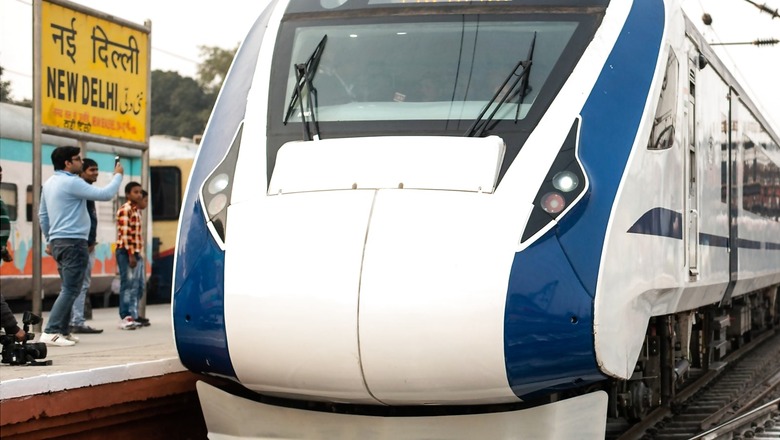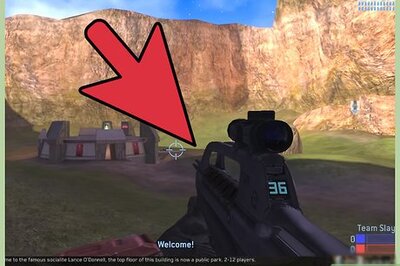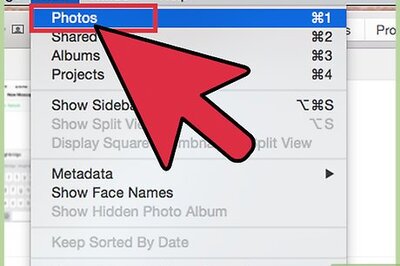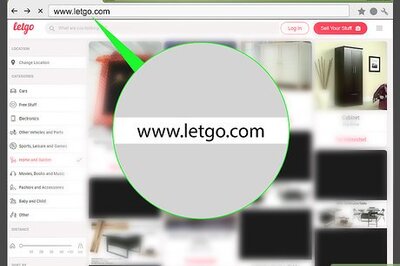
views
In February, finance minister Nirmala Sitharaman presented a paperless Budget 2022 in Parliament in which capital investment of Rs 1,37,000 crore was allocated for the railways. Under this, she also made the announcement for 400 Vande Bharat Express trains.
Last year, Prime Minister Narendra Modi announced 75 Vande Bharat trains in 75 weeks that will connect different parts of the country. Since then, over 20 weeks have passed and no trains have been delivered. Despite this, Sitharaman, in her speech, made an announcement for 400 trains.
Sitharaman said over the next three years, 400 next-generation semi-high speed Vande Bharat Express trains will be developed and produced; these will have improved energy efficiency and passenger riding experience. Vande Bharat was originally known as Train 18. It was built by Integral Coach Factory (ICF) under the directions of the then general manager Sudhanshu Mani.
At present, there are only two trainsets running — both from Delhi — to Varanasi and Katra. Mani, however, believes that if required equipment ordering is done and orders are finalised by September, ICF Chennai and the supporting industry will be able to provide 40 trains each year. According to him, India can have 120 Vande Bharat trains by September 2025.
Why are these trains different
Unlike regular express trains, which have detachable locomotive at one end, the traction for a Vande Bharat series trainset is provided by electric gear (traction motor, rectifier, converters, transformer etc) suspended from alternate coaches and drawing energy from overhead equipment via pantographs mounted on coaches.
In simple words, it is a semi-high speed trainset, each comprising 16 coaches, and self-propelled. These do not require an engine. This is known as a ‘distributed traction power system’ and it is increasingly becoming the standard for passenger operations around the world.
Distributed power, also known as trainset technology, allows the train higher acceleration and deceleration as compared to loco-hauled trains that take more time to attain top speed or gradually come to a halt. With shorter journey times, a trainset can theoretically cover more trips carrying more passengers.
A 16-coach Shatabdi type train has one source of power at one end of the train in the form of a train locomotive providing approximately 6,000 horsepower. But a Vande Bharat rake has eight motorised coaches providing approximately 12,000 horsepower to the train.
Apart from the technological aspects of Vande Bharat, which can hit 160 kmph in 140 seconds, superior comfort elements in this train separate it from a regular express train. These include superior seats, vacuum toilets, plug doors, gangways and other amenities. Indian Railways has begun to include these functions in the enhanced version of LHB coaches known as Tejas.
Tejas carriages are now being incorporated into Rajdhani and intercity trains. Only two kinds of seating are available on the current Vande Bharat trains — chair car and executive chair car. The railways is currently building 102 new Vande Bharat trains, which will replace the two running at present.
Based on current trainset prices, these 400 trains represent a possible investment of Rs 50,000 crore over the next three years. This is because the new Vande Bharats will include different specifications and also count inflation.
However, as reported early last year that Medha Servo Drives Ltd, based out of Hyderabad, won a contract worth Rs 2,211 crore to develop as well as manufacture propulsion, control and other equipment for 44 rakes of Vande Bharat-type trainsets. As per the railway ministry, the first will be tested in May, while the second will tested in June.
From August to September, three production facilities will build five to seven trainsets each month, including ICF Chennai, MCF Rae Bareli, and RCF Kapurthala, between August and September.
Aluminium coaches for Vande Bharat
Furthermore, according to the budget, the 400 new trains are expected to be more efficient. This means more energy-efficient than the current stock as well as other internal changes. To make this happen, the Railways is considering developing many of these trainsets using aluminium rather than steel.
Reportedly, each new generation trainset will be 40 to 80 tonnes lighter than the present Vande Bharat due to the upcoming aluminium body that would also bring a superior aerodynamic profile. But Lalit Chandra Trivedi, who was principal chief mechanical engineer, ICF Chennai, and GM of East Central Railway, highlighted in an article that aluminium-made light coaches are only ideal if there is a need to reach speeds of over 200 kmph to justify the nearly double cost of a stainless steel rake.
Additionally, he said Indian Railways has no plans to upgrade track speeds beyond 160 kmph, which means that the use of aluminium at this moment is better avoided. Second, according to him, since India currently does not have the technology to create aluminium shells, importing the technology that cannot be profitably deployed due to infrastructural constraints at a time when the country is aiming for Atmanirbhar Bharat, is questionable.
Like Mani, however, railway insiders are optimistic that the aim of producing 400 trainsets in three years would be accomplished. Moreover, the Railway Board has formed a committee to make recommendations on the best course of action. It was also reported that multiple players are likely to be engaged to complete the order in three years.
Meanwhile, Indian Railways has announced that it is planning to add radio entertainment to the list of amenities available to passengers on Vande Bharat trains and Shatabdi Express.
According to reports, service will be available on 10 Shatabdi and 2 Vande Bharat trains. Passengers on these trains will be greeted by radio music as they go through Delhi, Lucknow, Bhopal, Chandigarh, Amritsar, Ajmer, Dehradun, Kanpur, Varanasi, Katra and Kathgodam.
Read all the Latest News India and Breaking News here



















Comments
0 comment